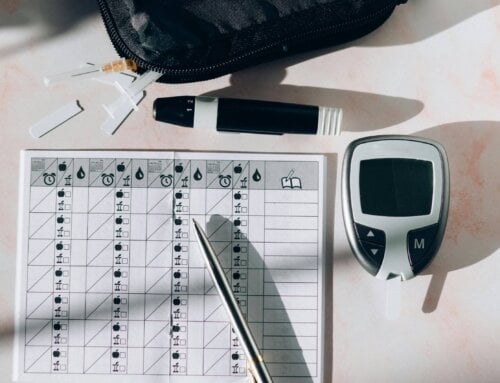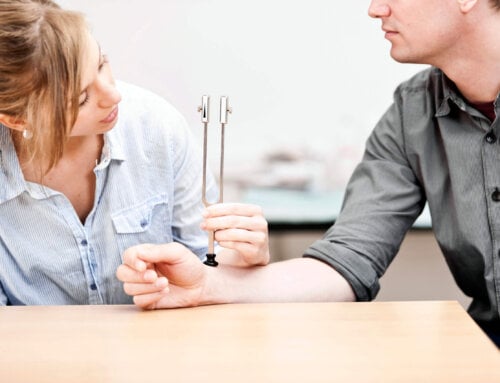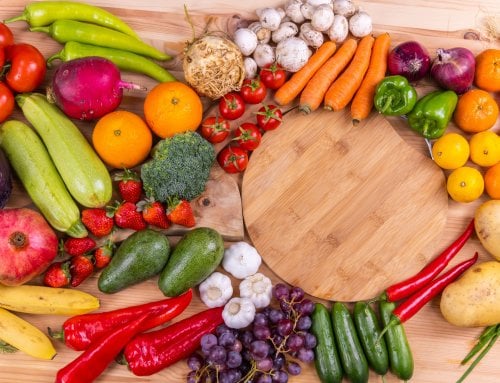The CDC reports that “more than 1/3 of Americans are currently obese with many more considered in the overweight category”. This comes as no surprise and it is well documented that obesity can increase the risk of hypertension, hyperlipidemia, type 2 diabetes, coronary disease, heart failure and strokes. It is estimated that we as Americans eat an average of 200 calories more a day than we did in the 1970’s. Remember one pound equals 3500 calories, so 200 extra calories a day adds up quickly! To help target this current problem, The Dietary Guidelines Advisory Committee “recommends a reduction in overall food portions in retail settings, school cafeterias, food courts, restaurants and public venues”.
It has been studied and is consistent that “when people are served larger quantities, they eat them”. Most people are unaware of a realistic food portion. Another strategy that is being examined is to have the food industry reformulate and change food production to improve nutritional value. Just a few weeks ago, the FDA called for removal of all trans-fats from prepared, boxed and packaged foods. Repackaging may also lead to improved recognition of portions. Perception and environmental cues may affect eating amounts including stress, anxiety, boredom and mindlessness. For example, people serve themselves less in a tall thin glass when compared to a short wide glass. Food companies are now considering individual packages with lower costs as well as easier ways to reseal larger bags for improved later freshness. The actual label may be changed to make it easier to identify an individual portion size. Along with eating smaller portions, it is wise to make some easy food trades to lower sodium, fat and artificial ingredients. Making smart changes in your food choices will help lower the risk of future chronic disease and assist in controlling your numbers of hyperglycemia (elevated blood sugar) and hypertension (elevated blood pressure). Let’s look at some easy trade offs that will allow you to eat healthier and not lose the taste.
1. Trade out Boxed High-Sugar Cereals for Steel Cut Oatmeal
It may be easy and more appealing to pour a bowl of Lucky Charms, Honey Bunches of Oats, Frankenstein Berries or any other high sugar cereal, but when examining the ingredients there is also multiple artificial colors and flavors along with low fiber. The serving size generally allows for 1/2 cup. Most people never measure and end up eating 3-5 servings per bowl! Breakfast can add up to 500 calories without the milk or protein. Cook steel cut oatmeal which now comes in quick cooking methods. The best way to prepare oatmeal for blood sugar control is to make a pot at the beginning of the week and let it cool in the refrigerator. Each day, heat up a cup (2 servings of a carbohydrate) which removes some of the starch. Place a handful of berries on top for a delicious wholesome breakfast. Add an egg, an egg white, a cheese stick , a tablespoon of peanut butter or a 1/4 cup of cottage cheese for protein and you have a well balanced meal which will easily satisfy you for the next 4 -5 hours.
2. Trade out Fried Chips for Baked Chips
Some people need the crunch of chips on or with their sandwich or as a snack, so try this easy swap. Eat veggie baked chips in carrot, kale, green bean or zucchini flavors. Even better, rinse fresh kale and cut into small pieces, mix with a tablespoon of olive oil, fresh garlic and bake at 450 for 10-12 minutes. The chips will be crunchy and delicious without the fat, preservatives and salt. Look for baked, unsalted pita chips or flavored pita chips for crunch. Try unsalted small pretzel rings or baked potato sticks in place of salted and greasy potato chips. If you must, buy individual small bags of fried chips. There are whole grain chips, crackers and snacks that should satisfy the need for crunch. Buy chips or snacks in individual serving bags or place in small plastic bags when you purchase instead of reaching for the entire bag. Place 10 chips in a bowl and put the oversized bag away! Make a healthier version of popcorn. The movie theatre variety can have up to 1000 calories per bag with added sodium and fat. The microwaveable popcorn bags are still permitted to have trans-fats with artificial butter and flavorings. The inside lining of the microwaveable bags are considered endocrine disruptors similar to the inside of canned vegetables and certain water bottles. Choose to air pop your own popcorn in a special container which is simple and cost effective in the microwave. If you need a richer flavor place a tablespoon of flavored oil in a pot on the stove top and make your own. Toss in two teaspoons of grated Parmesan cheese and you have an easy high-fiber and filling snack. One serving of popcorn is 3 cups which is a nice size snack.
3. Trade out Iceberg Lettuce for Dark Leafy Greens
Although calories are not the issue in this trade, the dark leafy greens offer much more nutrition. Iceberg lettuce is mostly water where as the dark leafy greens including kale, collard greens, romaine, arugula, Swiss chard and dandelion greens contain more minerals, vitamins and antioxidants. They have more magnesium and potassium for heart health along with vitamin C and A. At first, the taste may be bitter for some so break them in slowly by mixing iceberg lettuce with the dark greens. Dark leafy greens can be used as sandwich wraps, sandwich toppers, and cooked side dishes besides building a base for salads.
4. Trade out Fruit Juice for a Cup of Cut up or Medium Piece of Fruit
Patients are always amazed when they hear fruit juice is not the best choice when they have diabetes. They assume that a big glass of orange, grape, apple or cranberry juice is the great way to start the morning since natural juice is “healthy”. Drinking fruit juice can easily add pounds and raise blood sugars quickly. A discussion about food particle size allows them to understand that juice has no fiber and gets into the blood stream rapidly; this usually causes a huge blood sugar rise. Eating a cup of whole fruit allows for a slower blood sugar response due to digestion time, pulp and fiber. Add a handful of nuts for even more controlled blood sugar response to the fruit. Simply trade out the juice for fresh or frozen fruit.
5. Trade out Store-Bought Smoothies for Home Made Smoothies
Many local food shops and chains now carry fruit smoothies which can be expensive, contain huge portions and have too many carbohydrates and calories. Regular sugar, brown sugar, Agave or honey is often added for sweetness especially when the fruit is not ripe. Stick to using your own blender and add a cup of fruit to a cup of milk or protein powder with ice cubes and you will know you are having a proper treat. Many people may still get a huge rise in blood sugars with this simple blender drink. Checking blood sugars 2 hours after the smoothie may help you decide if you need to completely avoid whole fruit drinks. Adding a spoonful of crushed nuts may also reduce the blood sugar response.
6. Trade out Packaged, Bagged or Boxed Croutons and Make Your Own
Cut up 1-2 day old whole grain or sour dough bread into small pieces and stir with garlic powder, dried basil, and rosemary; bake on a cookie sheet with spray olive oil for 12-15 minutes at 400 and you will have cheaper ,tasty, and healthier croutons .Even better ,think about adding Chia, sunflower, or sesame seeds to your salad in place of croutons. Seeds have more fiber, zinc and will easily be satisfying. Chia seeds are filled with Omega 3 fatty acids for those who can not or do not eat fish. They contain 10 grams of soluble fiber for 2 tablespoons. Try them on oatmeal, yogurt, smoothies, salads and vegetable casseroles.
7. Trade out Deep Dish White Bread Pizza for Thin Whole Wheat Pizza
Trade out deep dish white refined flour crust pizza with extra cheese, pepperoni and sausage for whole wheat, thin crust, light cheese pizza loaded with vegetables; adding mushrooms, onions, peppers, tomatoes and olives. You will reduce the sodium and fat content immediately. The vegetables will provide fiber which will fill you up and blunt the blood sugar. Even better, buy a pizza stone and whole grain dough at the supermarket bakery and create your own thin crust pizza with fresh herbs and ingredients. Experiment and use shrimp, chicken or lean ground beef for more protein. No need to call delivery or use frozen pizza which may contain artificial flavorings and ingredients.
Trade out Dinner Utensils for Salad Utensils
Trade out a dinner plate for a salad plate, a regular fork for a salad fork, a tablespoon for a teaspoon and a tall thin glass for a short wide one. Perception is important in portion control and this is an easy way to start. Fill up that plate and do not get seconds. Make a plate with a protein, carbohydrate and lots of vegetables.
These are simple ways to trade out poor food selections and portions with healthful changes and not jeopardize taste. Start today and I’m sure you will be glad you did!
NOTE: Consult your Doctor first to make sure my recommendations fit your special health needs.












“people serve themselves less in a tall thin glass when compared to a short wide glass.” So shouldn’t we trade the fat glass for the thin?
I find General Mills Fiber One Original to be a good cereal. No sugar and low glycemic.
Jack Allen